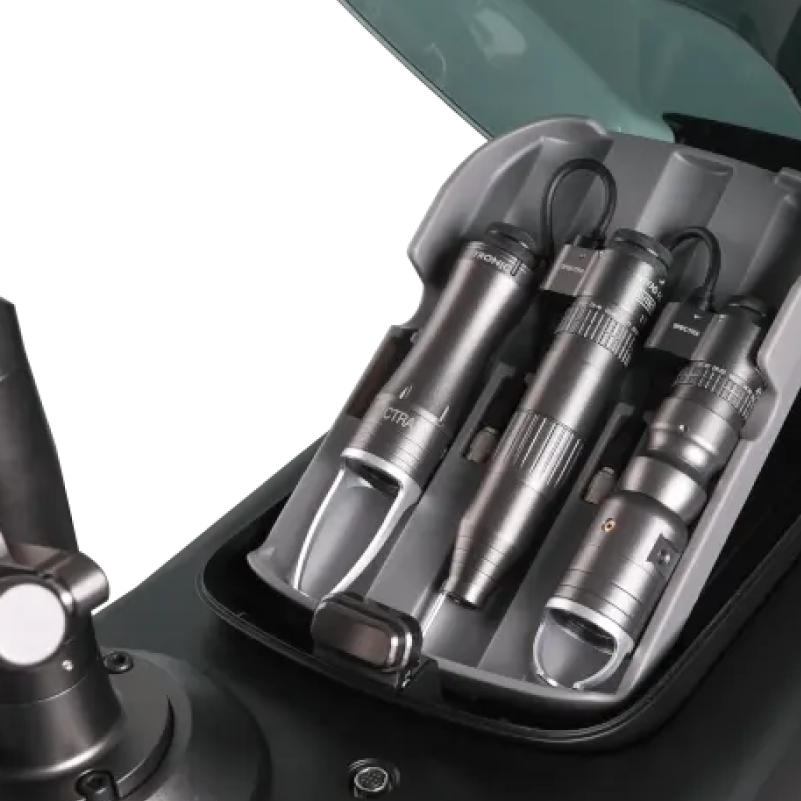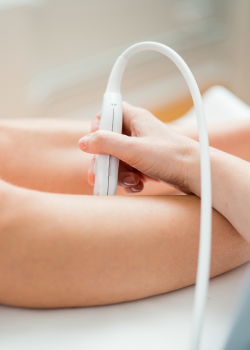Treatment Duration | 15-30 Min |
|---|---|
Socially Presentable | immediately to a few days |
Durability | permanent |
Pain | moderate |
Interval
| 4–8 weeks |
Contraindications | infections, tendency to keloids |
|---|---|
Preparation | numbing cream |
Aftercare | wound care |
UV abstinence
| 2–4 weeks |
Tattoos are visible reflections of our personal history — they tell stories of experiences, people, or moments in time, or simply serve as an expression of beauty. Yet as we evolve, our sense of self may change. A design that once felt meaningful might no longer fit who we are today, or professional circumstances might call for a change, especially when visible tattoos are less welcome.
With tattoo removal using the Hollywood Spectra™ Laser by Lutronic, Dr. Brandenburg’s Hamburg dermatology practice offers expert, compassionate support for your personal reasons and goals. The treatment is designed to be both effective and gentle on the skin, combining state-of-the-art technology with medical precision.
Book a consultation in our dermatology practice in Hamburg — we’ll discuss your goals, analyze your skin type and tattoos, and create a personalized treatment plan.
Today, laser therapy is considered the gold standard in modern dermatology. Lasers precisely target and fragment tattoo pigments without damaging surrounding tissue. Older methods — such as surgical excision, dermabrasion, or chemical peels — are largely outdated, as they often involve greater injury, scarring, and inconsistent results.
At our clinic, we use the advanced Hollywood Spectra™ Laser. As a dual-wavelength nanosecond laser (1064/532 nm), it breaks down even dense or multicolored pigments with exceptional precision. This approach makes the procedure gentler, more effective, and faster than conventional laser systems while minimizing the risk of scarring or pigment alterations.¹
In a personal appointment we analyze your tattoo, skin, and goals. We explain the realistic course of treatment and answer all your questions.
In the first session, the tattoo is targeted with the laser. Thanks to the short pulse duration, pigment particles are gently fragmented.
Depending on the size, color, age, and depth of the tattoo, multiple sessions are usually required. Often 5–10 treatments are needed; complex, multicolored, or very old/deeply embedded tattoos may require more.
To allow skin recovery and give the body time to clear fragmented pigment, we typically schedule 6–8 weeks between sessions.
After each session, results are documented and the ongoing treatment plan is individually adjusted.
Avoid friction, pressure, or mechanical irritation on the treated areas to prevent inflammation or delayed healing.
Direct sun exposure should be strictly avoided to prevent pigment shifts. Always apply sunscreen with at least SPF 50, even on cloudy days.
Keep the treated area clean and dry. Use fragrance-free, soothing moisturizers to support skin regeneration. Avoid perfumed creams, alcohol-based products, and exfoliants.
Do not use tanning beds, saunas, peels, or microdermabrasion until the treated skin has fully healed.
Maintain a healthy lifestyle — stay hydrated, get enough rest, and follow a balanced diet. This helps your body naturally eliminate fragmented pigment particles more effectively.
As mentioned earlier, several factors influence the effectiveness of laser tattoo removal. In most cases, 5 to 10 sessions spaced about 6 to 8 weeks apart are needed. For more complex tattoos or certain pigment colors, the entire treatment process can extend over a year or longer.
It’s important to remember that the skin needs adequate time to regenerate between sessions, and the body gradually breaks down the fragmented pigment. Patience and consistent aftercare are key to achieving the best possible outcome.

Black pigments respond best to laser treatment. Colored inks such as red, blue, green, and yellow also respond far better than with older laser systems, though some shades may require additional sessions.
Older tattoos are often easier to remove because their pigment has already started to break down naturally. Fresh tattoos, on the other hand, contain compact pigment clusters that may require more treatments.
Professional tattoos are typically applied more evenly into the skin, allowing for more consistent laser results. Amateur tattoos can be more irregular in depth, sometimes requiring individualized settings.
Fair skin (Fitzpatrick type I–II) generally responds most efficiently to laser tattoo removal. Medium to darker skin types (III–VI) can also achieve excellent results, though treatment parameters must be carefully adjusted to minimize the risk of pigment changes.³
Not every tattoo can be removed completely. In some cases, faint shadows or residual pigment may remain visible. We always provide an honest and realistic assessment of what’s achievable during your consultation — ensuring you can make a fully informed and confident decision about your treatment.
Expertise and experience with Dr. Anna Brandenburg
Removing a once-loved tattoo is always a deeply personal decision. At our practice, we approach this step with understanding, sensitivity, and dermatological expertise — so you can feel completely at ease throughout your treatment. Combining medical precision, years of dermatological experience, advanced laser technology, and an eye for aesthetics, we aim to help you achieve your desired results as gently and effectively as possible.
Every skin type, every tattoo, and every goal is unique. That’s why we guide you personally and carefully from the initial consultation to the final session. You’ll receive not only effective tattoo removal, but also comprehensive medical care that prioritizes your safety and your best possible aesthetic outcome.
Book your personal consultation online or by phone — we look forward to accompanying you on your journey.




Doctors with Heart and Experience
Modern Dermatology & Aesthetics
Heilwigstraße 33, 20249 Hamburg
We use cookies to optimize our website and our service.
Under settings, you will find detailed information and can make your choices. You can revoke or adjust your selection at any time in the cookie manager at the bottom right of the page.